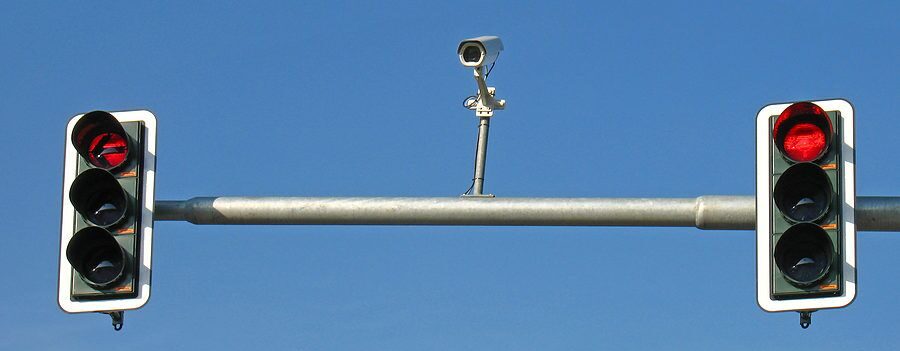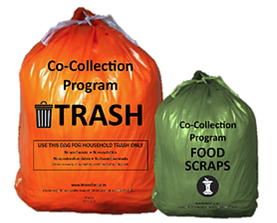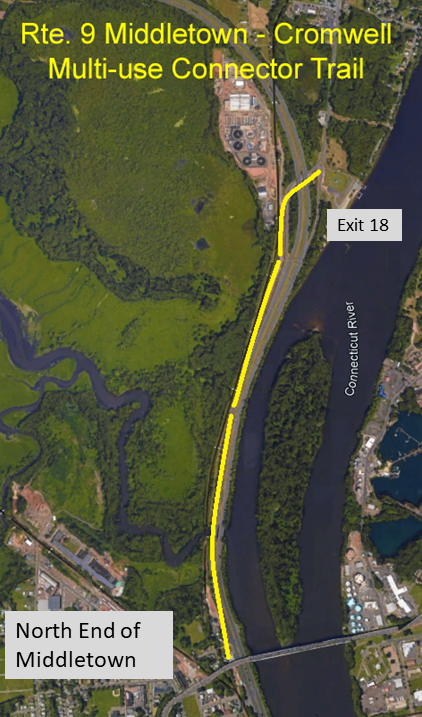 The Transportation Climate Initiative (TCI) is a carefully constructed regional plan to reduce carbon emissions from the transportation sector. If implemented, TCI will create allowances for the wholesale distribution of oil and gas, place a fee upon those allowances, and invest the resulting revenue in clean public transportation, electric vehicle infrastructure, and non-motorized transportation options such as bike routes. Over time, the allowances will decline and the cost will rise, to ensure lower emissions from transportation.
The Transportation Climate Initiative (TCI) is a carefully constructed regional plan to reduce carbon emissions from the transportation sector. If implemented, TCI will create allowances for the wholesale distribution of oil and gas, place a fee upon those allowances, and invest the resulting revenue in clean public transportation, electric vehicle infrastructure, and non-motorized transportation options such as bike routes. Over time, the allowances will decline and the cost will rise, to ensure lower emissions from transportation.
The emission reductions will occur because the revenue from the sale of allowances will be invested in clean transportation. For example, more electric school buses will use less gasoline and diesel fuel. That will also reduce emissions of particulate matter (PM) that are so harmful to respiratory health, especially for children whose developing lungs are especially vulnerable to particulate matter pollution. Asthma is often a direct result of PM pollution, and diesel school buses are notorious emitters of PM.
In short, TCI will produce a double benefit: 1) reduce greenhouse gas emissions, and 2) reduce air pollution that is especially harmful to children and low income residents of who live near highways and congested streets where air pollution is the worst.
In the 2021 session of the Connecticut General Assembly, TCI was vigorously opposed by Republicans and the oil and gas industry who called it a disguised gas tax that would lead to exorbitant gas prices at the pump that would ruin the economy and hurt the poor. But TCI actually includes a mechanism to ensure that the wholesale fees will not raise gas prices by more than 5 cents per gallon. And if Republicans really wanted to help the poor, they could 1) expand the child tax credit and the earned income tax credit that would offset a higher price for carbon, and 2) relieve the poor from the harmful effects of air pollution.
Since retail gas prices have risen in the past months, TCI is sure to face stiff opposition from its usual opponents. But if we delay climate action until a time when it is easy, painless, and convenient, we can be sure that no action will happen.
Urge Middletown’s Common Council and Mayor Florsheim to urge our local legislators and the leaders of the Connecticut General Assembly to pass legislation to enact TCI.















 Currently president of the Jonah Center Board and chair of Middletown’s Resource Recycling Advisory Commission, Krishna Winston has been committed to environmental conservation since long before recycling became mandatory in the State of Connecticut in 1991. She served on the task force that designed Middletown’s first recycling program. In October of this year she spent sixteen hours going door to door on Middletown’s north side to inform residents about the new co-collection program beginning in November.
Currently president of the Jonah Center Board and chair of Middletown’s Resource Recycling Advisory Commission, Krishna Winston has been committed to environmental conservation since long before recycling became mandatory in the State of Connecticut in 1991. She served on the task force that designed Middletown’s first recycling program. In October of this year she spent sixteen hours going door to door on Middletown’s north side to inform residents about the new co-collection program beginning in November.
 The Transportation Climate Initiative (TCI) is a carefully constructed regional plan to reduce carbon emissions from the transportation sector. If implemented, TCI will create allowances for the wholesale distribution of oil and gas, place a fee upon those allowances, and invest the resulting revenue in clean public transportation, electric vehicle infrastructure, and non-motorized transportation options such as bike routes. Over time, the allowances will decline and the cost will rise, to ensure lower emissions from transportation.
The Transportation Climate Initiative (TCI) is a carefully constructed regional plan to reduce carbon emissions from the transportation sector. If implemented, TCI will create allowances for the wholesale distribution of oil and gas, place a fee upon those allowances, and invest the resulting revenue in clean public transportation, electric vehicle infrastructure, and non-motorized transportation options such as bike routes. Over time, the allowances will decline and the cost will rise, to ensure lower emissions from transportation. I’ve often wondered about espaliered trees, and they even figured in a short piece of fiction I once wrote. Espalier is the art of training dwarf trees to grow in a flat plane along a wall, fence, or trellis. They create an atmosphere of mystery, wonder, and an evocation of some kind of Garden of Eden. I’ve stopped to admire them at botanical gardens and occasionally at Ballek’s nursery in East Haddam. Because we see them in famous gardens, we tend to think of them as expensive or unattainable, as something no longer possible. As you will learn, you can easily grow an espaliered fruit tree for under $20 (under $30 if you choose a tree with four different types of apple or pear bearing branches) but you’ll need some simple hardware that might cost another $15. Or, you could just use bamboo, the way growers do. You will likely have fruit much sooner. I never bought an espaliered fruit tree from a nursery, but I did buy a very tiny birch that Nancy Ballek had pruned on dwarf rootstock that was highly contorted. Sixteen years later it is still 30” tall and about 40” wide. That demonstrates the power of dwarf rootstock. And that is the secret of espalier.
I’ve often wondered about espaliered trees, and they even figured in a short piece of fiction I once wrote. Espalier is the art of training dwarf trees to grow in a flat plane along a wall, fence, or trellis. They create an atmosphere of mystery, wonder, and an evocation of some kind of Garden of Eden. I’ve stopped to admire them at botanical gardens and occasionally at Ballek’s nursery in East Haddam. Because we see them in famous gardens, we tend to think of them as expensive or unattainable, as something no longer possible. As you will learn, you can easily grow an espaliered fruit tree for under $20 (under $30 if you choose a tree with four different types of apple or pear bearing branches) but you’ll need some simple hardware that might cost another $15. Or, you could just use bamboo, the way growers do. You will likely have fruit much sooner. I never bought an espaliered fruit tree from a nursery, but I did buy a very tiny birch that Nancy Ballek had pruned on dwarf rootstock that was highly contorted. Sixteen years later it is still 30” tall and about 40” wide. That demonstrates the power of dwarf rootstock. And that is the secret of espalier.  The aquatic plant known as the water chestnut (trapa natans, not the kind you eat in Chinese food) showed its invasive potential in recent summers at many points along the Connecticut River and its tributaries. In our own Floating Meadows, the freshwater, tidal marshland formed where the lower Coginchaug and Mattabesset Rivers converge, the presence of these plants was first recorded in 2009. The Jonah Center has been monitoring the area closely since 2013, pulling out a few plants each year.
The aquatic plant known as the water chestnut (trapa natans, not the kind you eat in Chinese food) showed its invasive potential in recent summers at many points along the Connecticut River and its tributaries. In our own Floating Meadows, the freshwater, tidal marshland formed where the lower Coginchaug and Mattabesset Rivers converge, the presence of these plants was first recorded in 2009. The Jonah Center has been monitoring the area closely since 2013, pulling out a few plants each year. In the course of our campaign to increase Middletown’s tree-planting budget, some people told us they would like to donate their own money to plant trees. That’s commitment! Then we heard about
In the course of our campaign to increase Middletown’s tree-planting budget, some people told us they would like to donate their own money to plant trees. That’s commitment! Then we heard about  Middletown, historically known as the “Forest City”, has been losing trees for many years at a faster rate than it has been planting them. With a small fixed budget for both tree removal (Public Works) and for tree planting and forestry services (Urban Forestry Commission), Middletown generally takes down between 50 and 75 dying or diseased trees per year. In the same period, twenty to thirty young trees are planted. In 2019, the number will be well over 100 trees taken down. And, because the Urban Forestry Commission saw a need to spend several thousand dollars on safety pruning of old and historic trees, even fewer new trees than usual have been planted.
Middletown, historically known as the “Forest City”, has been losing trees for many years at a faster rate than it has been planting them. With a small fixed budget for both tree removal (Public Works) and for tree planting and forestry services (Urban Forestry Commission), Middletown generally takes down between 50 and 75 dying or diseased trees per year. In the same period, twenty to thirty young trees are planted. In 2019, the number will be well over 100 trees taken down. And, because the Urban Forestry Commission saw a need to spend several thousand dollars on safety pruning of old and historic trees, even fewer new trees than usual have been planted.